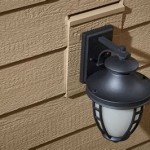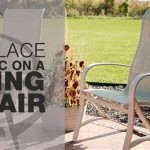Best Paint for Outdoor Railings
Outdoor railings face constant exposure to the elements, making paint selection crucial for both aesthetics and longevity. Choosing the right paint protects the railing material from sun, rain, snow, and temperature fluctuations, preventing rust, rot, and other damage. This article explores the best paint options for outdoor railings, considering factors like durability, weather resistance, and application methods.
Key Considerations When Choosing Railing Paint
Several factors play a significant role in determining the most appropriate paint for outdoor railings. The railing material itself dictates the type of paint required, as different materials have varying adhesion properties. Furthermore, the local climate significantly impacts the paint's performance; areas with high humidity or extreme temperatures necessitate specialized formulas. Finally, desired aesthetics, such as color and finish, contribute to the overall selection process.
Types of Paint for Outdoor Railings
Various paint types offer specific benefits for outdoor railing applications. Oil-based paints offer excellent durability and adhesion, particularly to metal surfaces, and provide a smooth, hard finish. However, they require longer drying times and produce strong fumes during application. Alternatively, water-based acrylic paints offer faster drying times, lower odor, and easier cleanup. They also demonstrate good weather resistance and UV protection, making them a popular choice for wood and metal railings.
For metal railings particularly prone to rust, specialized rust-inhibiting primers and paints are essential. These coatings contain additives that prevent rust formation and provide a barrier against moisture. Epoxy-based paints offer superior hardness and chemical resistance, making them ideal for high-traffic areas or environments with harsh conditions. They typically require two-part mixing before application and offer excellent long-term protection.
Preparing the Railing for Painting
Proper surface preparation is paramount for successful paint adhesion and longevity. Cleaning the railing thoroughly removes dirt, grease, and mildew, which can interfere with paint bonding. Using a wire brush or sandpaper helps remove loose rust or peeling paint from metal surfaces. For wooden railings, sanding smooths the surface and removes splinters, creating a better surface for paint application. Priming the railing, especially metal surfaces, provides a uniform base for the topcoat and enhances adhesion and corrosion resistance.
Application Techniques
The chosen application method impacts the final finish and overall efficiency. Brushes offer excellent control for intricate details and tight corners, ensuring complete coverage. Rollers provide quicker coverage for larger, flat surfaces, while spray painting offers the fastest application, particularly for ornate or complex railing designs. However, spray painting requires careful masking to protect surrounding areas. Regardless of the method, applying thin, even coats allows proper drying and prevents drips or runs, resulting in a professional-looking finish.
Recommended Paints for Different Railing Materials
For wrought iron or steel railings, oil-based enamel paints or direct-to-metal (DTM) acrylic paints offer excellent protection and durability. DTM paints eliminate the need for a separate primer, simplifying the application process. Aluminum railings typically require specialized primers designed for non-ferrous metals before applying acrylic latex paint. Wooden railings benefit from exterior-grade acrylic latex paints that offer flexibility and resistance to cracking and peeling.
Maintaining Painted Railings
Regular maintenance extends the life of painted railings and preserves their appearance. Periodic cleaning with mild soap and water removes dirt and grime, preventing buildup that can damage the paint film. Inspecting the railing for chips, cracks, or peeling paint allows for prompt touch-ups, preventing further deterioration. Reapplying a fresh coat of paint every few years, depending on the climate and wear, provides ongoing protection and maintains the railing's aesthetic appeal.
Factors Influencing Paint Choice: Climate and Environment
Climate and environment play a significant role in determining the suitable paint for outdoor railings. In coastal areas, where exposure to salt spray is prevalent, highly resistant paints with excellent moisture and UV protection are crucial. Similarly, areas prone to high humidity require mildew-resistant paints to prevent the growth of mold and mildew. For regions with extreme temperature fluctuations, paints designed for flexibility and resistance to cracking and peeling are essential.
Choosing the Right Finish
Paint finishes impact both the aesthetics and functionality of the railing. Gloss finishes offer a shiny, durable surface that is easy to clean, making them ideal for high-traffic areas. Satin finishes provide a subtle sheen and good durability, while flat or matte finishes offer a non-reflective surface that hides imperfections well. Considering the desired aesthetic and the level of maintenance required helps in selecting the appropriate finish.

Porch Railing Refresh With Stops Rust Spray Paint

How And Why To Repaint Porch Railings In The Fall An Oregon Cottage

How And Why To Repaint Porch Railings In The Fall An Oregon Cottage

Can You Paint Composite Deck Railings Monks Home Improvements

How To Paint Porch Rails And Stain A New Deck Newlywoodwards

How To Paint Or Stain Railings

How To Paint Outdoor Railings Coat Paints

How To Repaint Metal Porch Railings Add Instant Curb Appeal

How To Paint Exterior Railing Sherwin Williams

Q A Of The Week What S Best Way To Paint My Rusty Metal Railing
Related Posts







